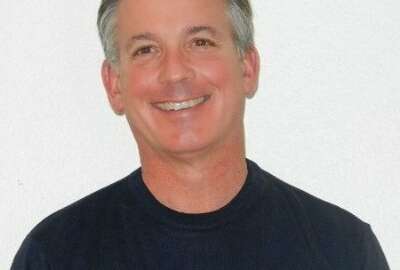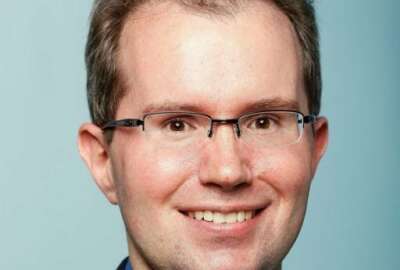
Common pitfalls USDA needs to avoid when modernizing IT
Agriculture Department CIO Gary Washington provides more details on its plans across the five Centers of Excellence areas.
Agencies and industry alike are closely watching the Agriculture Department’s IT modernization plan and how it will interact with the new Centers of Excellence initiative announced by the White House’s Office of American Innovation.
Since USDA is the first agency to use this approach, which the White House unveiled in December, agencies want to know if it really will work and how they should prepare, while vendors are watching for potential opportunities.
One of the first steps is the General Services Administration’s expected awards under the CoE initiative for support services across the five focus areas — cloud adoption, IT infrastructure optimization, customer experience, service delivery analytics and contact center — that should come any day now.
In the meantime, USDA is starting to lay out its strategy of where the CoEs can help immediately.
The first piece came Feb. 1 with the launch of a new website, Farmers.gov . The agency says the site is an “interactive one-stop website for producers” and will add multiple features over the coming months to let agricultural producers make appointments with USDA offices, file forms and apply for USDA programs.
Gary Washington, the USDA chief information officer, said at the ServiceNow Federal Forum last week that Farmers.gov is part of the customer experience improvement strategy.
“This is where we are putting a lot of focus to. We want to make sure our business systems that we have are modernized so it’s like a self-service activity, and the customer can engage USDA from a technology and a business perspective all everything is fluid, seamless and it’s quick,” he said. “We have started with our farm production and conservation mission area where we are rolling out solutions that will allow that vision to be realized.”
Along with farmers, USDA is focusing on improving services to the scientific communities it serves.
Washington said this means giving more data and computing power to researchers to enable easier sharing of data sets.
“They want to be in the cloud and work with their academic partners to share these large data sets. We want to provide them with the opportunity to be able to have an infrastructure that will allow them to be able to do some of those things and provide efficiencies to the public,” he said. “We want to make sure our employees and our customers have a pleasant experience right on that farm and they are able to apply for loans, get technical assistance and financial assistance right on the farm.”
To that end, Washington said USDA begin to address the “tremendous duplicity and overlap” across the agency to simplify and improve services.
This means Washington will become at least the fourth CIO to try to consolidate data centers and networks, and to push toward shared services.
Washington said he plans to consolidate data centers from 39 to 2, with an eye to giving bureaus the option of using commercial cloud, and consolidate and modernize the end-user support services using robotics and artificial intelligence.
“That’s a huge undertaking for us but we are up to the task and our component CIOs and our leadership are right there with us to take this on,” he said. “We made a decision that we are going to do whatever we can to get down to two, a backup and a primary data center, and provide the best services we can and really focus on the service part of this.”
USDA My Services portal
Data is driving many of these strategies and USDA’s information was far from consistent and standardized. So under the digital services analytics CoE, Washington said this effort will make sure everyone is making decisions from the same data and through an online dashboard.
“Our Secretary looks at our human resources posture, our IT portfolio and makes decisions based on information he has online, not on paper,” he said. “We are expanding on that in fiscal year 2018 to all of our mission areas, and in 2019, we will expand on this even further so everybody has access to this data and know exactly what we are discussing.”
Washington said the agency is taking the data piece one-step further for employees with the creation of a new portal called USDA My Services, a one-stop shop for all administrative service needs.
USDA says the portal is an employee-centric system of engagement that integrates with other applications and data sources to let employees enter requests once, regardless of the service they need from human resources, IT, facilities, security or from multiple areas.
Employees also will be able to create personal dashboards for analytics to focus on the information they need for their jobs.
“We are putting a lot of emphasis on not just the IT workforce, bur preparing the entire workforce for these changes,” he said. “We are asking people to do business a different way and asking IT professionals to support more modern technologies. One step we have taken with our partnership with OAI is we are trying to prepare our young men and women by having them join the team and learn from them as we go through this journey. We are working with our HR colleagues at USDA to look strategically for how we prepare all these men and women for this huge undertaking.”
Spotlight on CoE efforts
Without a doubt, USDA is undertaking a major transformation and by being first out of the gate using the CoE concepts, the spotlight on their strategies is even brighter.
There are several factors Washington should be cognizant of as he leads these efforts, say several former federal agency CIOs who went through similar high-profile transformations.
David Bray, the former CIO of the Federal Communications Commission and now the executive director of the People-Centered Internet (PCI) coalition, said one of the biggest things people miss with digital transformation is changing how results are done by people using the new technology.
“The biggest hurdle is how you take separate teams and functions and merge them into one team, one mission while at the same time meeting all the needs of your stakeholders in and out of government,” Bray said. “That is a massive culture change, and can be the undoing much more than the new technology.”
Bray, who moved the FCC’s data center and applications to the cloud as part of the agency’s modernization effort, said organizations need to convince people of the credibility of the effort by demonstrating early successes.
“That gives you enough fuel and proof points to show you have momentum because once you lose momentum, it’s hard to get back,” he said. “You can modernize technology and move to the cloud or a better commercial service, but if you don’t also come up with a better process, which falls under the program or mission area, then your success will be minimal.”
Rob Klopp, the former Social Security Administration CIO and now working as a consultant with the State of California, described similar challenges he faced in modernizing major mission applications.
But the first piece of advice he’d offer is for USDA or any organization to take on modernization efforts that have a strong potential of lasting longer than any one CIO will be in their position.
“If you start with loosey-goosey, touchy-feely workforce transformation things and then you go away in four years, if you haven’t found a way to make it stick, then it may not have been useful,” he said. “For all of these things, I think that you can accomplish more by trying to be really focused on delivering something to a state where you can be absolutely sure it will stay. A lot of times what that means is you have to focus on a smaller number of things that you know will stay and leave the other ones to the next person. I got some of it right when I was at SSA and didn’t get some of the things right. I’m sure if you went back to SSA today, you’d find things that stuck and find things that are in the process of decaying. So by focusing on the things that you can get to point where you make them stick is important, and that doesn’t mean you can’t take on something that will run beyond your lifespan as a CIO, but it means if you take on longer term things, you have to make sure you focus on some part that will stick.”
Quick wins equals money
Klopp, who made real progress at SSA in modernizing legacy systems, some more than 30-years-old, added each of the initiatives need strategies that aren’t just short term improvements, but how they will look in 5 or 10 years.
Both Klopp and Bray say finding funding for these modernization efforts always stresses these initiatives.
Klopp said he was lucky enough get support from SSA leadership to find money, but most agency IT budgets are stuck in the operations and maintenance rut.
Bray added that the first step to finding the money to modernize is like ripping off a Band-Aid, move to the cloud and then turn off the old systems.
Both say by using a commercial or outsourced model, agencies don’t have to worry about having money to modernize going forward and can just focus on ensuring the right capabilities exist on the modern infrastructure.
Bray said no one should be surprised by how hard digital transformation can be, which is why communication plans are so important.
“At some point you will need to pivot in your strategy and then you will need to show value from your efforts,” he said. “You also are interrupting the existing profit model of contractors so you need communication to the Hill, within the administration, and to the public. There may be people who will try to slow you down, both in government and in industry, but I think we are now reaching the point that there is so much evidence that we can’t continue to do business as usual, that you just will have to say this will require patience and have hiccups, but will be worth it in the end.”
Read more of the Reporter’s Notebook.
Copyright © 2024 Federal News Network. All rights reserved. This website is not intended for users located within the European Economic Area.
Jason Miller is executive editor of Federal News Network and directs news coverage on the people, policy and programs of the federal government.
Follow @jmillerWFED
Related Stories






